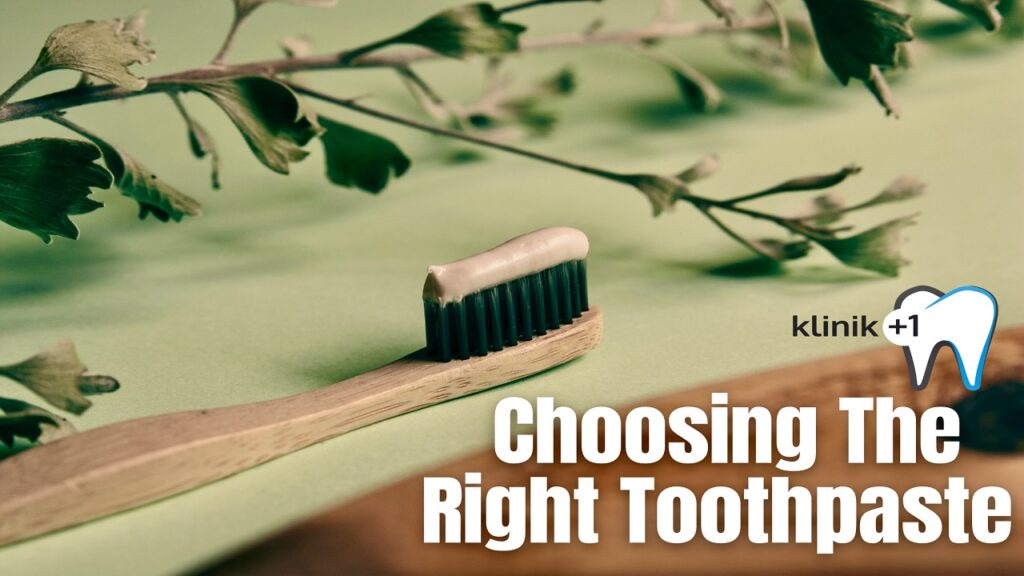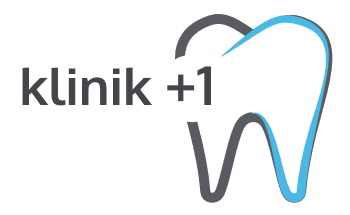Choosing Right Toothpaste
welcome to
Klinik +1 Dental Clinic
Keeping your teeth and gums healthy is essential for your overall wellbeing. One of the easiest ways to ensure good oral health is by choosing the right toothpaste.

Choosing Right Toothpaste: What Ingredients to Look For & Avoid
Keeping your teeth and gums healthy is essential for your overall wellbeing. One of the easiest ways to ensure good oral health is by choosing the right toothpaste. But with so many options available on the market, it can be overwhelming to know which one to choose. In this article, we will guide you on choosing the right toothpaste ingredients to look for and avoid.
Key Takeaways
• Key toothpaste ingredients include fluoride and natural ingredients.
• Choosing the right toothpaste is essential for good oral health.
• Toothpaste ingredients to avoid include sodium lauryl sulfate and triclosan.
• Reading toothpaste labels can help you make an informed choice.
Key Ingredients to Look For in Toothpaste
Choosing the right toothpaste ingredients can greatly enhance your oral health and overall wellbeing. The following key toothpaste ingredients are known for their beneficial properties:
Ingredient | Benefits |
Fluoride | Helps prevent tooth decay and cavities by strengthening the enamel of the teeth. |
Natural ingredients | Provide gentle yet effective cleaning action and do not contain harsh chemicals that can damage the teeth and gums. Some popular natural ingredients include tea tree oil, aloe vera, and green tea extract. |
Potassium nitrate | Can help reduce sensitivity in teeth by blocking nerve signals in the tooth. |
Strontium chloride | Alleviates tooth sensitivity by forming a barrier over the exposed dentin of the tooth. |
When shopping for toothpaste, look for products that contain these key ingredients to ensure optimal oral health.
Other Beneficial Ingredients
In addition to the above key ingredients, toothpaste may also contain other beneficial elements such as baking soda, which can help neutralize acid in the mouth and whiten teeth. If you have specific oral health concerns, such as gum disease or bad breath, look for toothpaste that addresses these issues with ingredients like stannous fluoride or zinc. Overall, choosing a toothpaste with the right ingredients can help to protect and improve your oral health, leaving you with a bright and healthy smile.
Ingredients to Avoid in Toothpaste
When choosing toothpaste, it’s important to be aware of the potential negative effects of certain ingredients. Here are some toothpaste ingredients to avoid:
Ingredients | Potential Side Effects |
Sodium lauryl sulfate | This foaming agent can irritate the skin and mucous membranes, leading to canker sores and mouth ulcers. |
Triclosan | This antibacterial ingredient has been linked to antibiotic resistance and hormonal disturbances. |
Other harmful ingredients to watch out for include parabens, artificial sweeteners, and microbeads.
Being mindful of these ingredients as you read labels can help you make an informed choice about the toothpaste you use.
Making an Informed Choice: Reading Toothpaste Labels
Reading toothpaste labels can be overwhelming, but it is an essential step in making an informed choice for your oral health. By understanding the ingredient list and concentration of active ingredients, you can choose a toothpaste that will be the most beneficial for you. Here are some tips to effectively read toothpaste labels:
1. Check the concentration of active ingredients: The concentration of active ingredients can vary widely between toothpastes. Consult with your dentist or oral healthcare professional to determine what concentration is best for you.
2. Avoid harmful ingredients: Look for toothpaste that does not contain harmful ingredients, such as sodium lauryl sulfate and triclosan. These ingredients can have negative effects on oral health and overall health.
3. Recognize any potential red flags: If you see an ingredient that you are unfamiliar with, do some research to determine its potential effects. Additionally, be wary of toothpastes that make unrealistic claims or have flashy packaging.
4. Check the active ingredients: Look for fluoride, which is essential for preventing tooth decay.
If you prefer natural ingredients, look for toothpaste that contains activated charcoal, tea tree oil, or neem. By following these tips and consulting with a dental professionals, you can make an informed choice when it comes to choosing the right toothpaste for optimal oral health.
Conclusion
Choosing the right toothpaste ingredients is essential for maintaining optimal oral health and achieving a radiant smile. By using toothpaste with key ingredients like fluoride and natural ingredients, you can effectively prevent tooth decay and promote strong teeth and gums. On the other hand, it’s important to avoid harmful ingredients like sodium lauryl sulfate and triclosan that can potentially have negative effects on your oral health.
Remember to read toothpaste labels carefully, deciphering the ingredient list and understanding the concentration of active ingredients. Consulting with a dentist or oral healthcare professional can also provide valuable guidance in making an informed choice. Prioritizing your oral health by choosing the right toothpaste ingredients can lead to a happier and healthier smile. So next time you’re browsing the oral care aisle, keep these tips in mind and make the best choice for your teeth and gums.
FAQ
A: When choosing toothpaste ingredients, it is important to look for key ingredients that are beneficial for oral health. These include fluoride, which helps prevent tooth decay, and natural ingredients that can provide additional benefits.
A: Yes, there are certain toothpaste ingredients that should be avoided. Sodium lauryl sulfate and triclosan are examples of ingredients that may have potential negative effects on oral health and should be avoided.
A: To make an informed choice, it is important to read toothpaste labels carefully. Look for information on the concentration of active ingredients and be aware of any potential red flags. Consulting with a dentist or oral healthcare professional can also provide helpful guidance.

